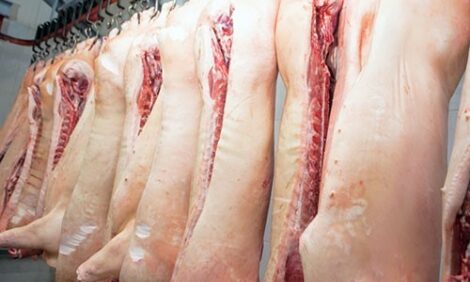



Scottish Red Meat Industry Showing Positive Market Signs
UK - There are many market signals to kindle further confidence in the future of the Scottish red meat industry, according to Jim McLaren, Chairman of Quality Meat Scotland (QMS).Speaking at the launch of QMS’s Annual Review on November 7th, 2014, Mr McLaren said he had no doubts that the ability of the industry to seize opportunities, coupled with the growing global demand for red meat and premium products, points to an encouraging future.
He was also confident that producers’ apprehension is set to be steadily replaced by a more focused, driven industry as the industry moves into a new era following reform of the Common Agricultural Policy (CAP).
“The sense of trepidation earlier in 2014 was particularly keenly felt in the beef sector, where most analysis of the predicted CAP changes suggested a significant reduction in payments by the end of the transition period,” said Mr McLaren.
“We now have more clarity on the way forward and I am confident in producers’ ability to get to grips with what the changes will mean for their individual businesses.”
Mr McLaren said that without doubt our industry still has many challenges to face but the long-term prospects for the Scottish red meat industry remain very positive.
After two years of decline in the sow herd, caused by the closure of pig slaughtering facilities in Broxburn and considerable pressure on producer margins, numbers steadied in 2013.
This was helped by the combination of an increase in producer prices and a sharp decline in feed costs as the year progressed. Mr McLaren also welcomed the recent announcement about Brechin abattoir which sends a positive signal to Scottish pig producers.
“There are some welcome indications that producers are rebuilding herds and investing to take advantage of the better margins achievable, though we must remain vigilant to prevent the threat of new diseases from overseas,” he said.
The UK is around 60 per cent self-sufficient in pig meat, and around a quarter of domestic production is exported each year so external factors, such as the strength of the pound, can have a significant influence on the UK market.
The £45 million “Beef Efficiency Scheme” announced by Rural Affairs Secretary, Richard Lochhead in June 2014 was also welcomed by Mr McLaren.
“The package was developed in response to recommendations by the Beef 2020 group set up by the Scottish Government at the end of last year. The aim of the scheme is to increase the efficiency of production of beef from the Scottish farms through reductions in wasteful and costly emissions and increases in productivity.”
The Beef 2020 vision is one of a confident market-driven grass-based cattle industry using leading edge technologies capable of delivering profitably to the home and world market high provenance, quality beef from sustainable production systems.
The recommendations set out in the report, which are designed to be owned and adopted by the Scottish beef industry, aim to facilitate collaboration, profitability, confidence and investment at every stage of the Scottish red meat supply chain – factors which are key in ensuring a future marked by sustainable, profitable growth.
Turning to the detail of QMS’s financial results, Uel Morton, QMS Chief Executive, emphasised that delivering value for the industry is a key component of every activity the organisation undertakes.
“Another important part of our strategy is leveraging additional financial resources for the Scottish red meat industry. During the past year QMS secured £1.7 million in grants (compared with £1.04 million last year) to undertake work on behalf of the industry,” said Mr Morton.
During the year to 31st March 2014 the total income was £7.24 million (compared with £6.88 million in 2013). Income from the statutory red meat levy for the year was £4.1 million (£4.4 million the previous year). This, said Mr Morton, was £340,000 less than the levy collected the previous year.
This was the result of a decrease in Scottish kill numbers during the 2013/14 year which reflects the double-edged sword of reducing livestock numbers being produced in Scotland and increasing numbers of Scottish livestock being slaughtered south of the border.
To download the Annual review, please click here.








